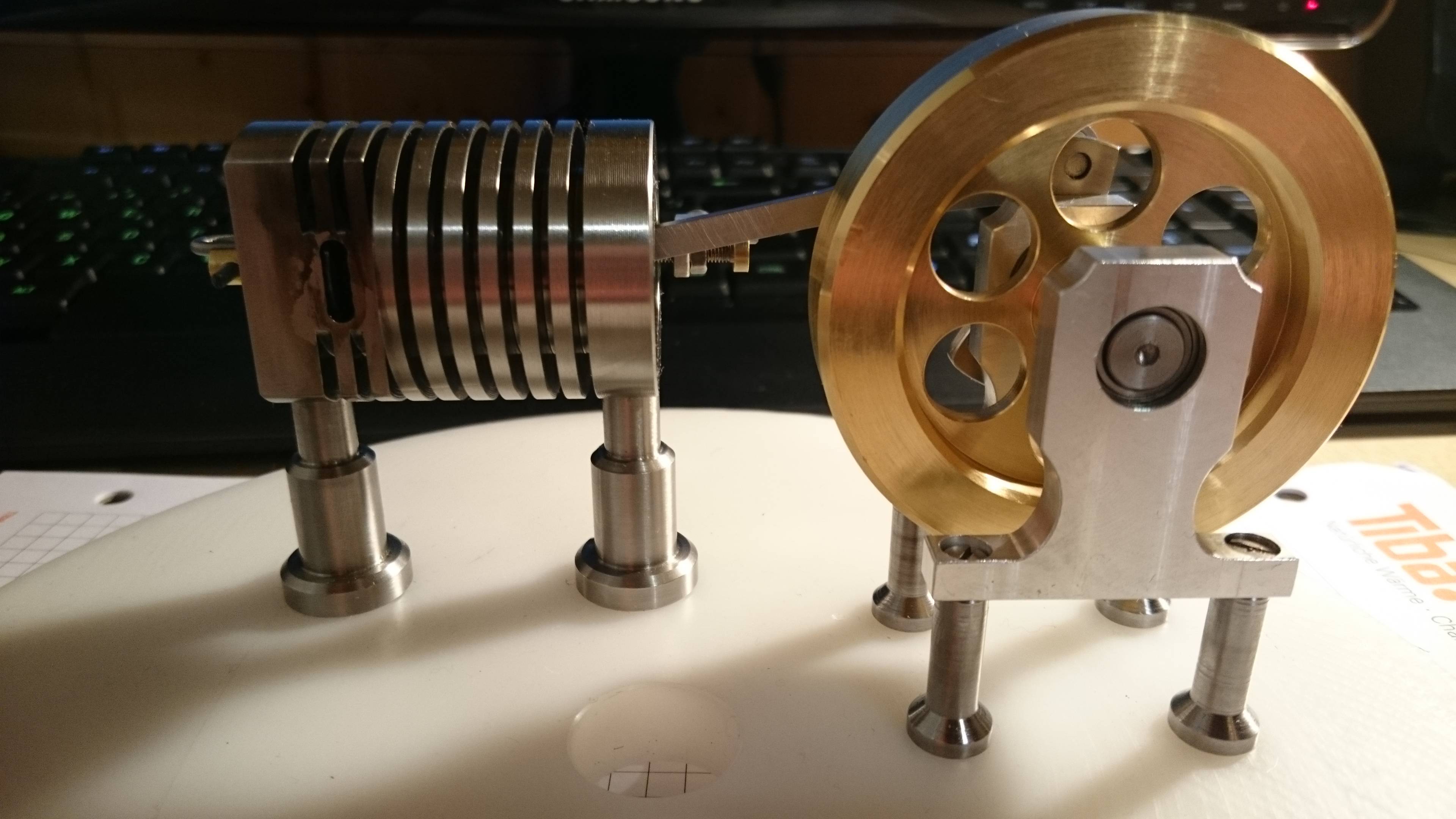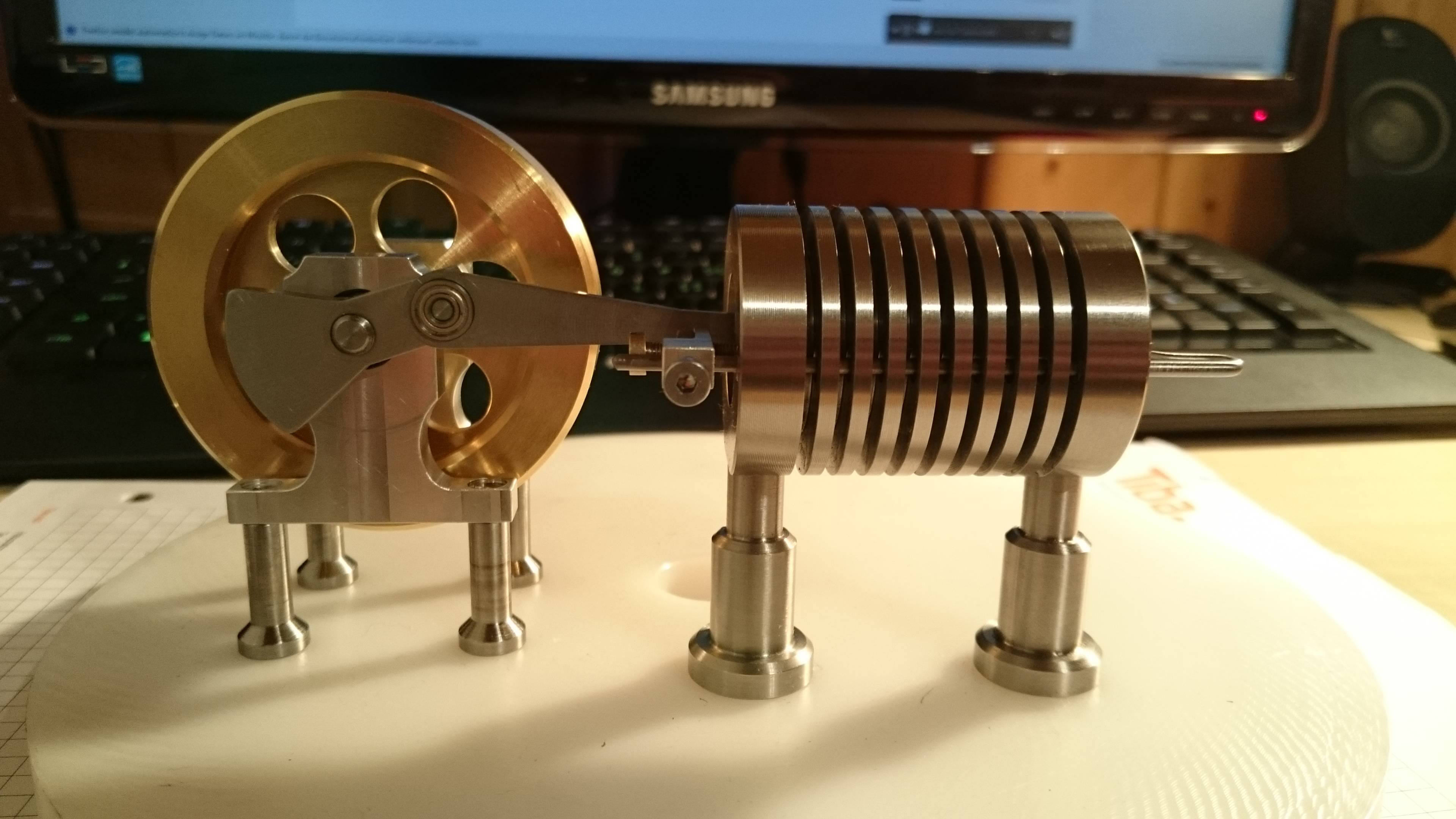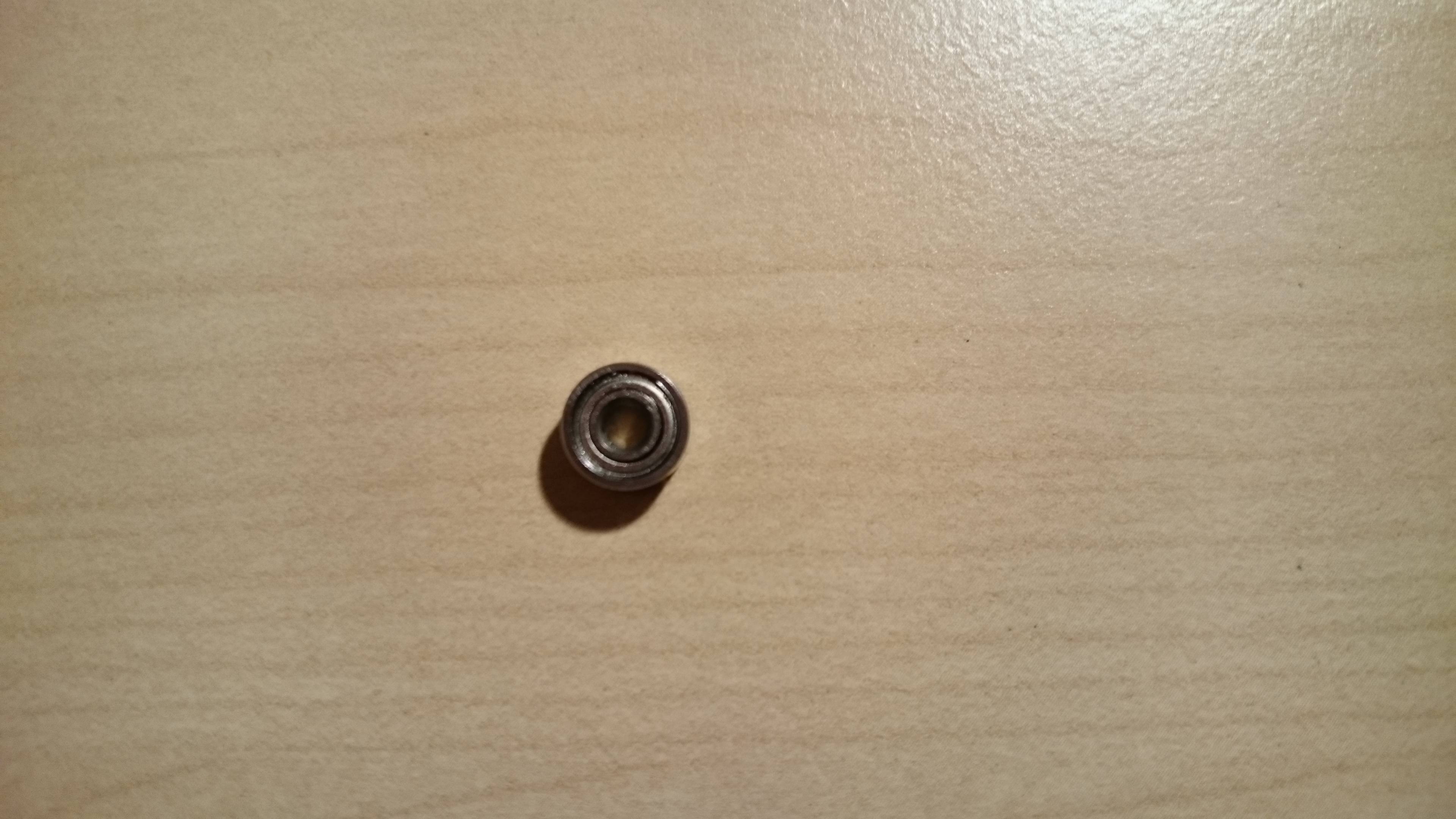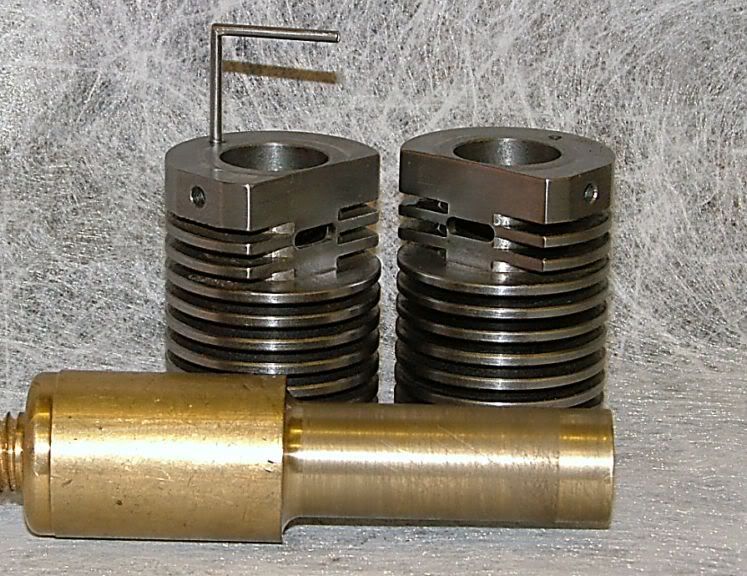Hey, my name is Michael
A month ago I started working on my first Flame Licker for a school project. This week I've finished it and saddly it isn't running at all. I saw some trouble shootings for Flame Lickers and read a lot about running this engine right, but there's nothing that fits my situation, so I've decided to ask you guys.
I'm not sure but I think the problem with my Flame Licker is, that the control piston on the left is opening way to early because of the air pressure. I' ve made a video where you can see my engine and how it runs, especially at the end of the video there's a SlowMotion shot which shows the cylinder movement slowly:
[ame]http://www.youtube.com/watch?v=m3OzK0dAcBk&feature=youtu.be[/ame]
Thanks for your help! And sorry for my English (I'm from Switzerland )
)
Here some pictures of my engine:



A month ago I started working on my first Flame Licker for a school project. This week I've finished it and saddly it isn't running at all. I saw some trouble shootings for Flame Lickers and read a lot about running this engine right, but there's nothing that fits my situation, so I've decided to ask you guys.
I'm not sure but I think the problem with my Flame Licker is, that the control piston on the left is opening way to early because of the air pressure. I' ve made a video where you can see my engine and how it runs, especially at the end of the video there's a SlowMotion shot which shows the cylinder movement slowly:
[ame]http://www.youtube.com/watch?v=m3OzK0dAcBk&feature=youtu.be[/ame]
Thanks for your help! And sorry for my English (I'm from Switzerland
Here some pictures of my engine:





































































